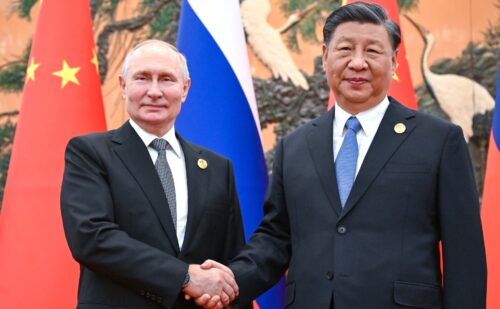Why China wants to join the anti-China trade deal
Last week, Beijing applied to join the CPTPP, a trade club formerly known as the TPP, which the U.S. originally designed to isolate China. Trump tore the deal up and it moved on without the U.S., but now China wants to join.

On Thursday, China applied to join the CPTPP, or Comprehensive and Progressive Agreement for Trans-Pacific Partnership, the 11-nation trade deal that represents 13.4% of global GDP. The deal, which came into effect in 2018, was once meant to isolate China — one U.S. official said it was as valuable as an aircraft carrier — but former president Donald Trump withdrew within a week of taking office. The current administration isn’t inclined to rejoin the deal, either; White House Press Secretary Jen Psaki said on Thursday that President Biden “would not rejoin the TPP as it was initially put forward.”
Why does China want in?
China’s announcement came a day after the U.S., the U.K., and Australia announced AUKUS, a new military pact aimed at counteracting China. Also on Thursday, the European Union unveiled a new Indo-Pacific strategy proposing closer economic ties with Taiwan. By applying to the CPTPP, China may be looking to grow diplomatic clout in response — but Foreign Ministry Spokesman Zhào Lìjiān 赵立坚 said on Friday that the issues are “completely unrelated.”
Indeed, the application couldn’t have been a last-minute decision: Chinese leader Xí Jìnpíng 习近平 expressed active interest in joining the CPTPP as far back as last November.
More likely, China sees support for the deal as an easy way to portray itself as a defender of free and open trade, unlike the self-isolating United States. Coverage by the nationalistic Global Times cited an analyst with government affiliations as comparing “China’s open and optimistic attitude toward the CPTPP” with “the U.S.…increasingly distancing itself from traditional trade partners.”
Besides the U.S., another target could be Taiwan, which informed CPTPP countries last year of its intention to apply. Jeffrey Wilson of the Perth USAsia Centre in Australia commented that by acting first, China could effectively force member states to choose explicitly between the two.
Will Australia, Canada, and other CPTPP members let China in?
Can China join the club? The short answer is no, at least for now. All 11 member countries, including Japan, Australia, Canada, and Vietnam, must agree in order for China to join — and Australia has already said no, citing China’s penchant for trade retaliation in response to diplomatic disputes. Along with Japan and Canada, Australia is pursuing a complaint against China at the World Trade Organization.
There’s even a chance that the United States could block China’s accession. One sentence in the 1,812-page United States–Mexico–Canada Agreement, or USMCA, could give the U.S. a tool to deter Canada and Mexico from entering negotiations with China: A vaguely written rule allows any of the three countries to terminate the North American trade deal if another one enters into a free trade agreement with a “non-market country.”
It’s hard to imagine that the situation would progress to the United States abandoning the USMCA in response to China joining the CPTPP, but the mere threat presents another barrier to China’s entry.
Political challenges aside, many observers are skeptical that China could stomach the inevitable reforms to environmental policies, state subsidies, and workers’ rights that accession would require. As the finance minister of Japan — the $13.5 trillion trade deal’s strongest supporter after the U.S. withdrawal — put it last week: “I don’t know, the way China is now — could it really be in a position to become a new member?”
China news, weekly.
Sign up for The China Project’s weekly newsletter, our free roundup of the most important China stories.






